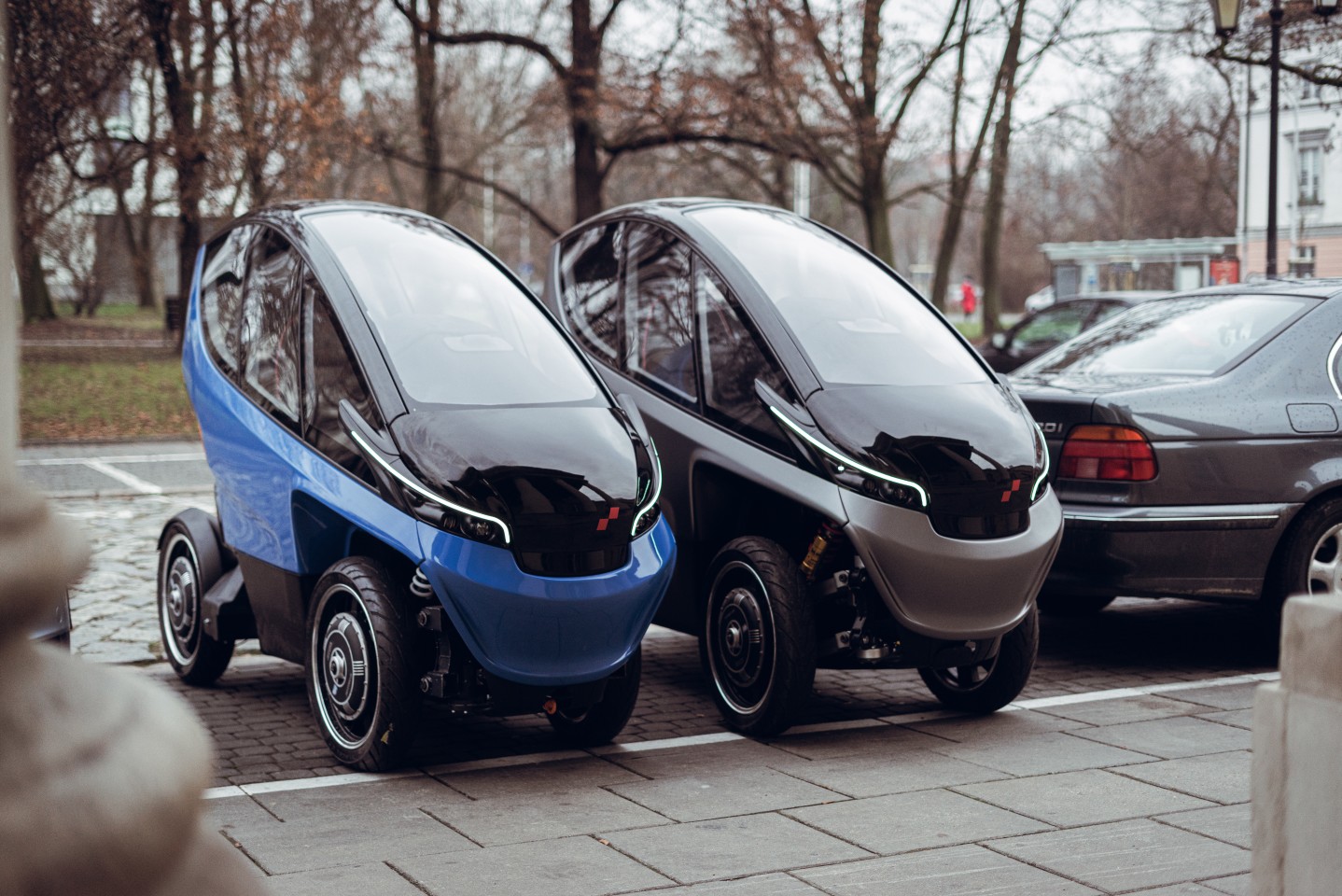It looks a bit like it’s a Twizy family member, but Poland’s Triggo EV has a few neat tricks that Renault’s city roller doesn’t. It leans into the corners, at higher speeds its front wheels are spread out for stability, but slow down and they can be pulled in for easier parking, and the batteries can be removed and exchanged for fresh ones.
Being developed for car sharing and package delivery, the Triggo EV has a top speed of 90 km/h (56 mph). In cruise driving mode, the Triggo measures 148 cm (58 in) wide, but at speeds of up to 35 km/h (21.7 mph) a mechanism draws in the front wheels towards the chassis for a width of 86 cm (34 cm) and a turning radius of 3.5 m (11.5 ft) – great for parking or maneuvering. All in, the cute electric four wheeler weighs in at 530 kg (1,168.5 lb), and has a total permissible mass of 750 kg (1,653.5 lb).
The wide or narrow modes are activated from the flat U-shaped steering control, which is flanked by screens displaying views from the left and right side cameras, and there’s a digital instrument cluster above. A physical control console sits to the right for activating other driving functions.
The Polish four-wheeler also features a tilting mechanism that leans the all-electric city runabout into corners by up to 20 degrees for a motorcycle-like feel, cemented by the passenger sitting behind the driver in pillion formation. The driver and passenger climb aboard via a single door that pops out and slides back at the push of a button.

Triggo
The vehicle is powered along by two brushless DC motors at the rear, while the current battery configuration comprises four 3.5-kWh scooter batteries for a per-charge range of up to 140 km (87 mi), and can be removed in five minutes. Its drive-by-wire steering makes use of a proprietary, computer-controlled servo system and is reported to make the Triggo ready for autonomous driving.
Triggo has this month unveiled a new prototype in its pre-production series, which is heading for testing on public roads. The company is looking to make the vehicle available to fleet operators, ride-hailing and car-sharing businesses from 2022, followed by autonomous taxi services the year after – and testing of remote operation of the vehicle has already started, on the road to full Robo Taxi operation. Key target markets include China, India and Russia. You can see a recent prototype in the video below.
Triggo on serpentines | Shall efficiency be fun?
Source: Triggo
Source of Article